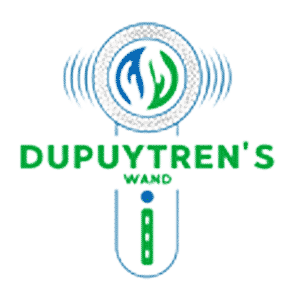Before we get into the best Dupuytren’s Contracture treatment, let us cover a few important pieces of information. Dupuytren’s Contracture affects the hand and fingers, starting as a lump or nodule on the hand. The condition is progressive, and as it worsens, it causes a cord to develop between the nodule and the joints on the fingers. The cord will cause the finger to bend unnaturally towards the palm, making use of the finger extremely difficult. In most cases, the disease is not painful; however, the pain can be unbearable if it is too close to a nerve.
The condition can affect anyone but is more common in men over 40. You are more likely to contract Dupuytrens Contracture if you are Caucasian, especially if you have Northern European roots. People who suffer from diabetes, liver disease, or have thyroid issues are more likely to develop Dupuytren’s Contracture. There is also more chance of developing the condition if a person consumes large amounts of alcohol or regularly smokes cigarettes.
There are numerous options for Dupuytren’s Contracture treatment; let’s take a look at these and both the pro’s and con’s.
Surgery
Surgery is the most commonly used Dupuytren’s Contracture treatment. A surgeon will make an incision in the hand and remove the infected tissue before sewing up the patient. The hand and finger will resume regular movement after surgery. The issue with surgery is the scar that is left is quite gruesome and prone to infection. There is a risk of nerve damage with surgery, as well as potential infection of the wound. The condition is also known to return after surgery.
Needle Aponeurotomy
A needle aponeurotomy involves a doctor inserting a needle into the affected hand. The needle is placed in the affected tissue and moved around. The movement breaks up the infected tissue, releasing the finger’s joint allowing for movement to return to normal. The issue is the procedure can result in nerve or tendon damage, which will require treatment. Patients are also known to suffer from numbness and a tingling sensation in the hand and fingers. There is usually swelling at the incisions site, and the hand is likely to become swollen.
Splint or Brace
Doctors will regularly recommend using a splint or brace, usually after the patient has taken an anti-inflammatory pain killer. Splints will keep the finger in a straightened position and stop any further bending. Splints and braces are cumbersome and make the use of the hand difficult. They known to cause pain and discomfort to the wearer. A splint or brace will not prevent the condition from returning and is recommended to be used during recovery from surgery.
Dupuytren’s Wand, Tape, and Jelly
The Dupuytrens Wand, Jelly, and Tape are proven to not only reduce the symptoms of Dupuytren’s Contracture but to do so after only a few uses. The tape is a far better solution than a splint or brace, as it doesn’t affect the hand as drastically. These three items can be found on the shop page of the website.

